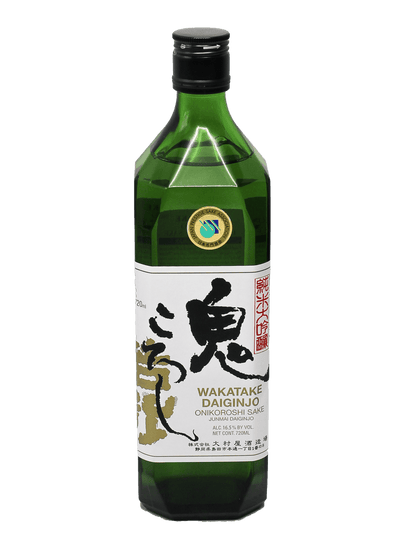Making Red Wine Sangria: What is Sangria?

Wine, much to the dismay of many purists, has always been mixed. Long before sangria, calimocho, and feria rebujito, fortified wines (port, Madeira, and sherries) counted as noble ingredients for early cocktails. Even ancient traditions speak of it. Today, when you buy red wine online, you should certainly know how to make sangria, a very popular wine cocktail.
What is Sangria?
Its reddish color, a hint of sweetness, and the certainty that it is served cold make it a great summer drink. However, sangria does not enjoy the best reputation, largely due to its overuse in tourist areas, where it is often made with excessive amounts of low-quality alcohol to maximize profit.
Still, it can be a delicious pairing for a summer meal. The secret to the best sangria lies in the quality of the ingredients and the maceration process, which must be done slowly and patiently to allow the flavors to blend well.
Sangria History
There are many stories and legends about the origin of sangria, but one of the most reliable historical accounts dates back to the 1800s. It was supposedly created by Spanish and Portuguese peasants, who made it with whatever local products they had at hand: wine, apples, peaches, and citrus fruits.
Another, more colorful version of its history, involving a bit of smuggling, dates to the 1700s and attributes the drink to a group of British sailors. At that time, alcohol consumption was prohibited in the Antilles, so they disguised Spanish rum with honey, spices, local fruits, and wine to make it look like fruit juice and thus evade the ban.
Although spiced wine was already consumed in medieval Europe, including Spain, the practice of adding chopped fruit first appeared in Andalusia.
“A drink composed of lemon water and red wine”
Andalusia was not a great red wine-growing region, but legend has it that locals added fresh fruit to a vat of low-quality wine and let it sit for a few days. Noticing that the wine improved considerably, they decided to enhance it further with spices, sugar, brandy, and cinnamon sticks. To their surprise, they had created a new drink with an exquisite taste, color, and fragrance.
Spanish Sangria History
Spanish texts do not mention sangria until the late 18th century, and the term sangría first appeared in the Royal Spanish Academy’s dictionary in 1803, where it was defined as "a drink composed of lemon water and red wine." In fact, a wine lemonade had already been documented in 18th-century dictionaries, but it seems that the term sangría eventually replaced it.
Whatever the original recipe may have been, today there are thousands of variations—nearly every Spaniard has their own version and claims it as the authentic one. Some add rum or brandy, others use spices (especially cinnamon, vanilla, or cloves), some dilute it with sparkling water, and others use orange soda to make it fizzy. There are even bold variations with gin and extra sugar—delicious, but best left to the experts.
A Beverage with Global Reach
In 2014, after two years of negotiations, the European Union approved—by a vote of 609 in favor, 72 against, and 4 abstentions—protection for the name sangría/sangria, restricting its use for exports from Spain and Portugal. While other countries can continue to produce the drink, they cannot market it under this name. Instead, they must use the designation “aromatized wine-based beverage.” This just shows how important red wine sangria is to Iberian culture!
Which Wine to Use for Sangria?
There is a great deal of flexibility in the red wine sangria recipes. Traditionally, the base is a full-bodied red wine, typically from Rioja, but some prefer white wines or rosé wines, as is common in Catalonia. It can also be made with cava, cider, or even Champagne (for a special version known as fiesta sangria).
Likewise, the fruit is not always the same: some recipes use only citrus fruits, others suggest peaches, while some incorporate apples, pineapple, kiwi, strawberries, or berries. The key is allowing the mixture to rest. It should be prepared at least a day in advance so the fruit can marinate in the wine overnight, infusing it with its flavors.
Traditional Red Wine Sangria Recipe
The traditional red wine sangria recipes use red wine (the better the wine, the better the result), chopped fresh fruit (not overly ripe and cut into fairly large pieces), sugar (ideally dissolved into syrup), and some grape or neutral spirit. Some prefer to skip the sugar, as the fruit provides enough sweetness. You will still find this style of Sangria in places like Granada, Spain.
How to Make Red Wine Sangria?

To make sangria with red wine, you need below mentioned ingredients -
Ingredients for Red Wine Sangria:
Preparation: Making red wine sangria is simple. In a pitcher, add all the sliced fruit and liqueurs (except the wine), stir, and let the mixture rest—ideally overnight.
Serving: Add ice, orange soda, and red wine, then stir gently before serving.
How to Make Cava Sangria?

Ingredients for Cava Sangria:
- 50ml Gin
- 50ml White Martini
- 50ml Cointreau
- 50ml Brandy
- Sliced fruit (your choice: apples and peaches are ideal)
- 75ml Orange juice
- Cava
Preparation: Pour the liqueurs into a pitcher, add the fruit, and let macerate for a few hours or preferably overnight. Before serving, add the orange juice and fill the rest of the pitcher with cava.
Final Thoughts
So, to sum up, the key to a refreshing, flavorful sangria, lies in using quality ingredients and allowing the flavors to blend over time. Whether you prefer a classic red wine sangria or a sparkling cava variation, the possibilities are endless. Ready to craft your own? Visit Bottle Barn to find the perfect red wine and spirits online for your next batch!


















Leave a comment